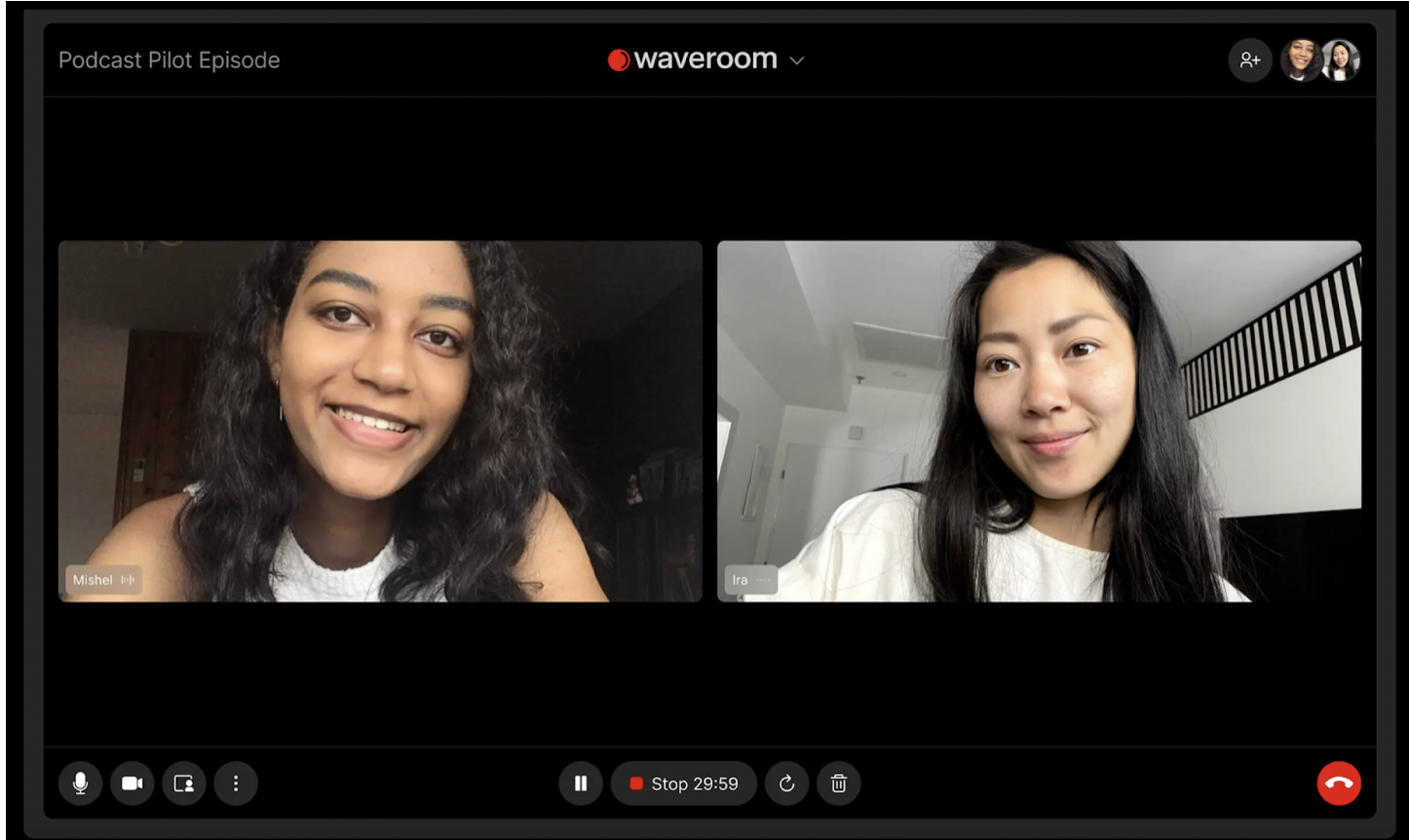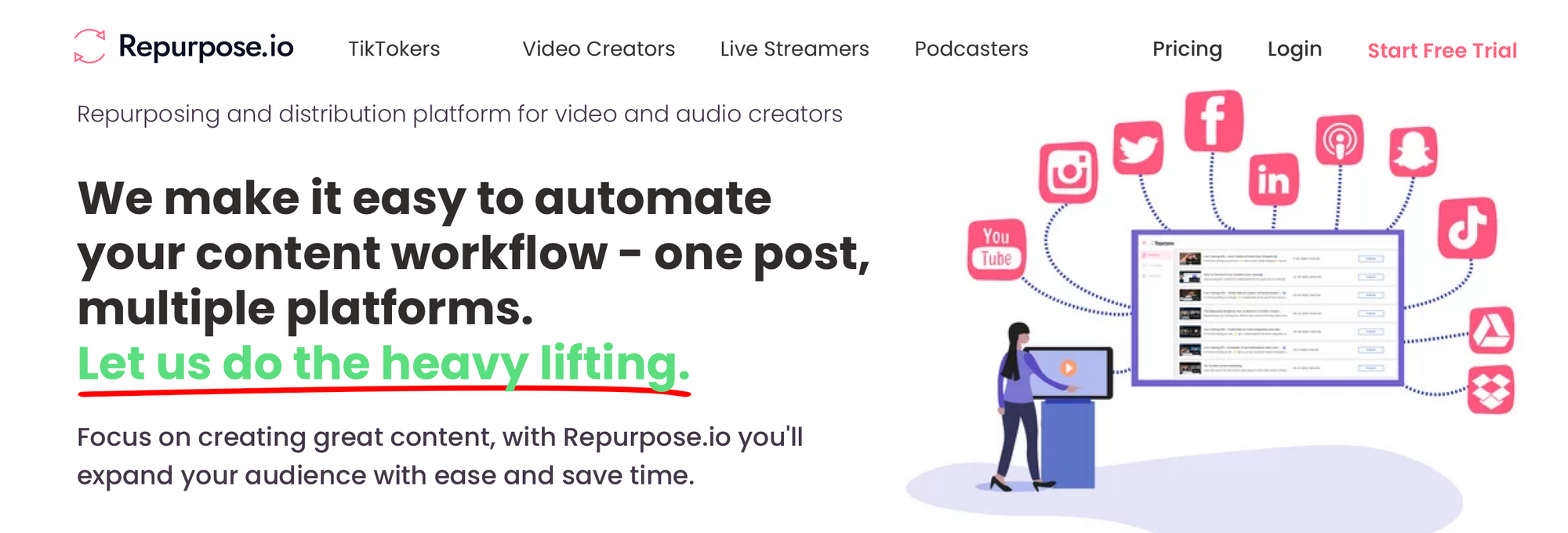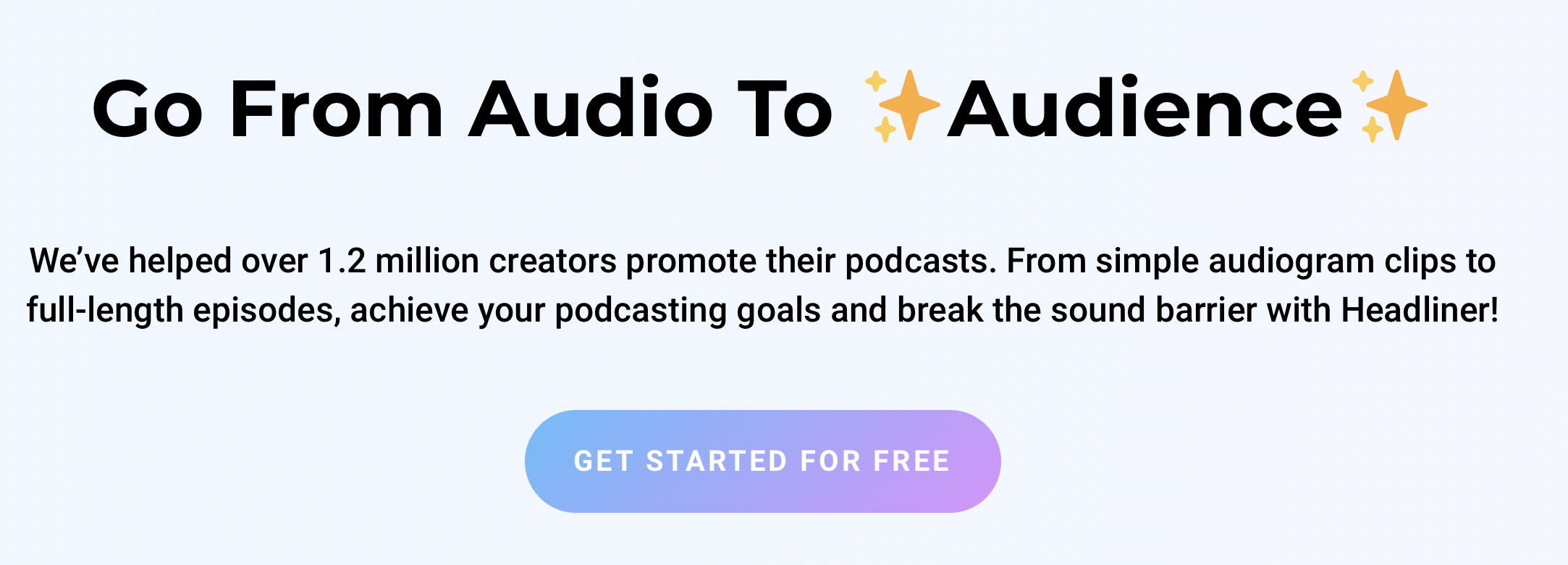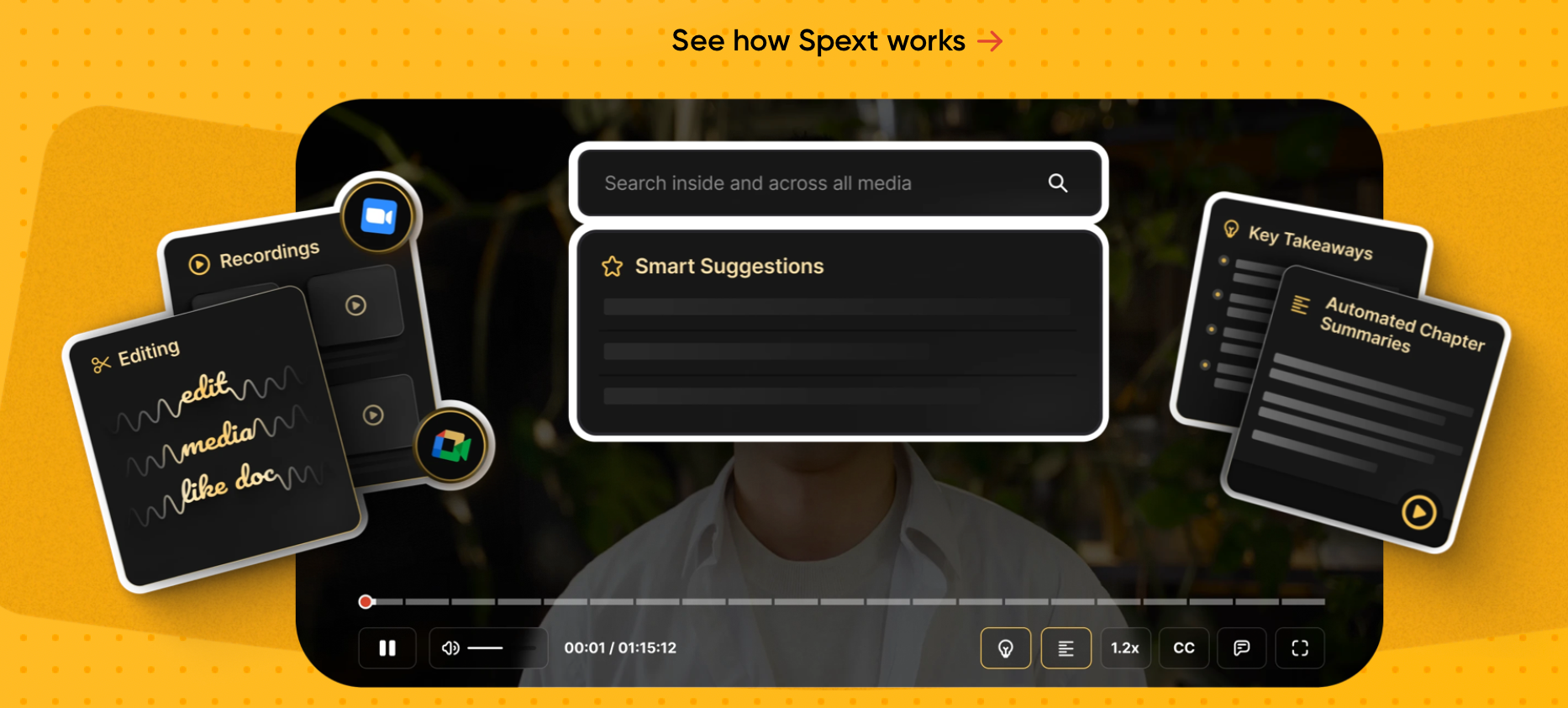9 Best AI Podcasting Tools: Noise Removal, Localisation, Editing & More
Best AI-powered tools for podcasters, from editing to voice cloning and localisation.

Content creators are constantly seeking innovative ways to captivate audiences and streamline production processes. But what if we tell you that you can effortlessly transcribe hours of audio in minutes, seamlessly edit out filler words and pauses, or even generate lifelike voice-overs—all with the power of AI at your fingertips?
In this list, we’ll delve into the array of AI tools tailored specifically for podcasters, which can elevate your shows to new levels of professionalism and efficiency. But let’s start with defining whether AI has and should have its place in podcasting at all.
Is AI even helpful when it comes to podcasting?
Podcasters can leverage AI in numerous ways to enhance their content creation process, streamline workflows, and engage audiences more effectively. One of the most obvious use cases is automated transcription. AI-powered transcription tools can swiftly convert spoken audio into text, saving you valuable time that would otherwise be spent manually transcribing episodes. These transcripts can be then repurposed for blog posts, show notes, or social media content, improving accessibility and discoverability.
What might be even more daunting than transcription of an hour-long interview? Our bet is editing. AI editing tools can intelligently identify and remove filler words, ums, ahs, and pauses from recordings, resulting in cleaner and more polished episodes. Some AI platforms even offer automated audio levelling and noise reduction features to enhance sound quality.
Let’s not forget about the creative potential of artificial intelligence. AI-generated content, such as automated summaries or episode teasers, can help you create engaging promotional material or provide listeners with quick insights into episode topics. AI can also generate natural-sounding voice-overs for intros, outros, or ad reads, adding a professional touch to productions. AI can assist in drafting podcast scripts by generating text based on predefined prompts or topic guidelines. These AI-generated scripts can serve as starting points for hosts or be refined further to suit the podcast's tone and style.
AI analytics tools are also what we’ll mention in our list. They can analyse listener data and feedback to provide valuable insights into audience preferences, behaviour patterns, and demographic information. This data can inform content decisions, optimise marketing strategies, and tailor episodes to better resonate with target audiences.
Last but not least is the localisation of your show. If you target an audience from different countries, AI-powered translation tools can facilitate the localisation of podcast content into multiple languages, expanding reach and accessibility to global audiences. Podcasters can reach new demographics and increase engagement by providing content in languages other than their native tongue.
Best 10 AI tools for podcasting
From automated transcription to personalised analytics, these tools are reshaping the way podcasters produce, promote, and analyse their content.
Waveroom

Waveroom is a user-friendly online platform designed specifically for podcast creators and interviewers in need of a seamless and top-notch recording experience. Whether you're flying solo or hosting guests, Waveroom simplifies the process, allowing you to effortlessly capture both audio-only and video podcasts straight from your browser. Perfect for individuals who prioritise simplicity over intricate editing tools, Waveroom offers the convenience of recording separate audio and video tracks, with the added bonus of receiving both individual files and a merged track neatly organised in your personalised dashboard. The tool is currently free for all.
Key features:
- Local recording for remote podcasts.
- AI-powered background noise removal.
- Effortless recording of high-quality podcasts online, ensuring stability and superior audio and video output.
- Up to four guests using a simple invitation link, fostering seamless collaboration in your podcast sessions.
- Individual workspace, complete with personalised rooms that you can name and delete for efficient organisation.
- Video podcasting in 2K HD resolution in MP4 format, delivering a visually impressive viewing experience.
- Clean, uncompressed audio at 48 kHz in WAV format, ensuring the utmost quality in your recordings.
- 120-minute total recording time per session, accommodating extended podcast discussions.
- Server recording storage that preserves your podcasts for up to 1 year, providing accessibility and peace of mind.
Pros: The tool is free for everyone. It provides high-quality local recording of audio and video both simultaneously and separately for all recording participants which significantly streamlines your post-production efforts.
Cons: Waveroom is currently available only in Google Chrome. Besides, it lacks other vital features, such as AI-powered text-to-speech, but this will be rolled out later this year.
Best for: Waveroom is the go-to solution for podcasters who prioritise simplicity, efficiency, and high-quality recordings. Whether you're a solo creator or have a handful of guests, this browser-based tool delivers a seamless podcasting experience tailored to your needs.
Descript

Descript is an all-in-one video and podcast editing tool that offers features such as transcription, easy-to-use video editing, and audio editing. Descript also provides a screen recorder and features like overdub, which can turn text into audio. The tool offers different pricing plans, including a free version with limitations on monthly usage and paid plans with additional features and higher usage limits.
With Descript, users can transcribe audio, record screens, edit audio and video files, identify speakers, manage timecodes, add closed captions, and easily remove filler words with just one click. One of its standout features is the ability to create a digital voice profile, allowing for personalised voice editing and manipulation.
Descript also offers convenient features such as a quick recorder for capturing audio on the fly, easy clip creation, and the ability to collaborate with others in real-time through live collaboration and comments.
Pros: Intuitive interface, real-time collaboration, easy audio editing, and seamless integration with other platforms.
Cons: Limited free version, occasional accuracy issues with transcription.
Best for: Podcasters seeking an all-in-one solution for editing, transcription, and collaboration.
Auphonic

Auphonic is an AI-driven audio processing tool that automatically optimises audio quality, levels, and noise reduction. One of its key features is batch processing, allowing users to apply the same audio settings to multiple files simultaneously, making it ideal for managing large volumes of content efficiently.
In terms of editing capabilities, Auphonic offers customisable audio presets that enable users to achieve consistent and professional-sounding results with ease. These presets cover a wide range of audio adjustments, including dynamics processing, EQ, and noise reduction, giving users the flexibility to tailor their audio to their specific preferences.
Integration with popular podcasting platforms further enhances Auphonic's usability, allowing users to seamlessly upload and distribute their processed audio files directly to their hosting platforms. While Auphonic does require an internet connection for processing, its cloud-based approach ensures accessibility from anywhere with an internet connection.
Despite its strengths, Auphonic does have some limitations, such as its pricing structure, which may not be suitable for all users, especially those on a tight budget. Additionally, some users may find the interface slightly complex initially, although the platform offers ample documentation and support resources to help users get started.
Pros: Batch processing, customizable audio presets, integration with popular podcasting platforms.
Cons: Limited free tier, requires internet connection for processing.
Best for: Podcasters looking to improve audio quality and streamline post-production tasks.
Otter.ai

Otter.ai provides AI-powered transcription services with real-time collaboration features and speaker identification.
With Otter.ai, users can effortlessly transcribe audio recordings into text, saving valuable time and effort typically spent on manual transcription tasks. The platform's advanced algorithms ensure accurate transcriptions, even in noisy environments, making it ideal for a wide range of recording scenarios.
One of Otter.ai's main features is its real-time collaboration capabilities, allowing multiple users to access and edit transcripts simultaneously. This makes it easy for podcasting teams to collaborate on episode outlines, show notes, or interview transcripts, fostering seamless communication and workflow efficiency.
In addition to transcription and collaboration features, Otter.ai offers speaker identification, enabling users to differentiate between multiple speakers in a conversation automatically. This feature is particularly useful for interviews, panel discussions, or multi-host podcasts, where speaker attribution is essential for clarity and context.
Pros: Accurate transcription, support for multiple languages, collaboration tools for team editing.
Cons: Limited free plan, pricing based on transcription minutes.
Best for: Podcasters in need of accurate transcription for interviews, discussions, or solo episodes.
Repurpose.io

Repurpose.io automates the repurposing of podcast content into various formats, such as audiograms, social media posts, and blog articles. This allows podcasters to extend their reach across multiple platforms and engage with their audience in diverse ways.
Repurpose.io also offers customisable templates, which enable users to create visually appealing content that aligns with their branding and style. Whether it's eye-catching audiograms for Instagram or informative blog articles for their website, Repurpose.io provides the flexibility and tools needed to create content that resonates with their audience.
Integration with popular podcast hosting platforms further enhances Repurpose.io's usability, allowing users to seamlessly import their podcast episodes and automate the content repurposing process. This saves valuable time and effort, enabling users to focus on creating compelling content rather than manually managing distribution across different channels.
Pros: Saves time on content repurposing, customizable templates, integration with popular podcasting platforms.
Cons: Limited customization options in the free plan, pricing based on usage.
Best for: Podcasters aiming to expand their content reach across different platforms and media formats.
Resemble AI

Resemble AI offers text-to-speech technology to generate lifelike voice-overs and character dialogues for podcasts.
A standout feature of Resemble AI is its ability to create custom voices that align with a brand's identity or specific project requirements. Users can customise various aspects of the voice, including tone, accent, and pacing, ensuring that the generated voice-overs seamlessly integrate with their content and resonate with their audience.
One of Resemble AI's standout features is its natural-sounding voices, which are generated using advanced neural network algorithms. These voices possess human-like intonation, pronunciation, and expression, creating an immersive listening experience for the audience.
Resemble AI also offers users the flexibility to choose from a diverse range of pre-existing voices, covering various accents, languages, and styles. Whether it's a professional narration, character dialogue, or branded voice assistant, Resemble AI provides the tools and resources to meet the unique needs of every project.
Pros: Natural-sounding voices, customization options for tone and accent, API for integration into existing workflows.
Cons: Pricing based on usage, may not suit every podcasting style.
Best for: Podcasters looking to create voice-overs, character voices, or narration without hiring voice talent.
Headliner

Headliner is a user-friendly tool, which allows users to create stunning video clips and audiograms with just a few simple steps. The platform offers customisable templates, enabling users to add captions, images, and animations to their content, ensuring that it grabs the attention of their audience and drives engagement.
Headliner provides seamless integration with popular podcast hosting platforms, allowing users to import their audio files directly into the platform.
Pros: User-friendly interface, customizable templates, integration with podcast hosting platforms.
Cons: Limited editing features in the free plan, branding watermark in free version.
Best for: Podcasters interested in promoting their episodes on social media with visually appealing content.
Spext

Spext offers AI-powered transcription and editing tools for podcasters, including automatic highlight generation and text-based editing.
One of Spext's standout features is its accurate transcription capabilities, which ensure that users can easily convert spoken audio into written text with high precision. This makes it an ideal tool for podcasters who need to transcribe interviews, discussions, or solo episodes for repurposing or accessibility purposes.
Additionally, Spext offers editing features that allow users to manipulate their transcribed text directly, making it easy to make changes, add annotations, or highlight key points. This text-based editing approach provides a convenient alternative to traditional audio editing software, especially for users who prefer working with written content.
Pros: Accurate transcription, editing via text-based interface, cloud-based storage.
Cons: Limited free version, pricing based on transcription minutes.
Best for: Podcasters who prefer text-based editing workflows or need tools for generating episode highlights.
Rask AI

Rask AI is an AI-powered video localisation and dubbing tool that offers a comprehensive solution for video editing and localisation. It uses AI technology to automate the video editing and localisation process, making it a one-stop tool for companies and content creators who want to quickly and easily localise their content. Rask AI supports over 130 languages, offers features such as voice cloning, multispeaker support, subtitles, SRT file upload, and more. The platform is known for its user-friendly interface, human-like accuracy, and cost-effectiveness, with the ability to translate content for as low as $1 per minute, making it over 10 times more cost-effective compared to traditional methods.
A standout feature of Rask AI is VoiceClone, which allows for personalised content delivery by replicating the user's voice across 28 languages.
Pros: Seamless AI-powered translation and localisation, support for over 130 languages, VoiceClone feature for natural human narration, multispeaker support for managing multiple speakers in a video, subtitles & SRT file support for professional localisation, and API access for comprehensive video localisation.
Cons: Occasional errors in voice cloning and possible timecode issues in certain languages.
Best for: Content creators, including indie studios, YouTube creators, and marketing teams looking to expand their audience abroad. Educators and online course creators aiming to boost accessibility and inclusion for remote students. Game development studios leveraging multi-speaker and voice cloning capabilities for immersive, localised experiences.
Best AI tools for podcasters: Wrapping up
So, from transcription to collaboration, audio editing to content generation, the world of podcasting is filled with opportunities to leverage AI technology for enhanced efficiency, creativity, and audience engagement. In this comprehensive guide, we've explored nine cutting-edge AI tools tailored specifically for podcasters, each offering unique features and functionalities to streamline various aspects of the podcasting workflow. Use AI wisely and remember that it'll never replace a human touch you add to each of your episodes.